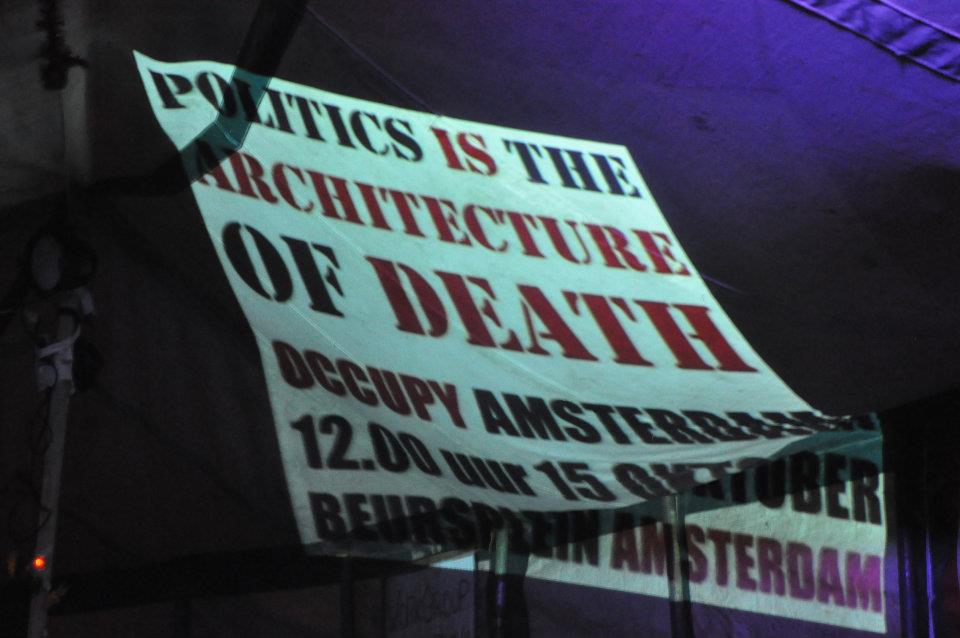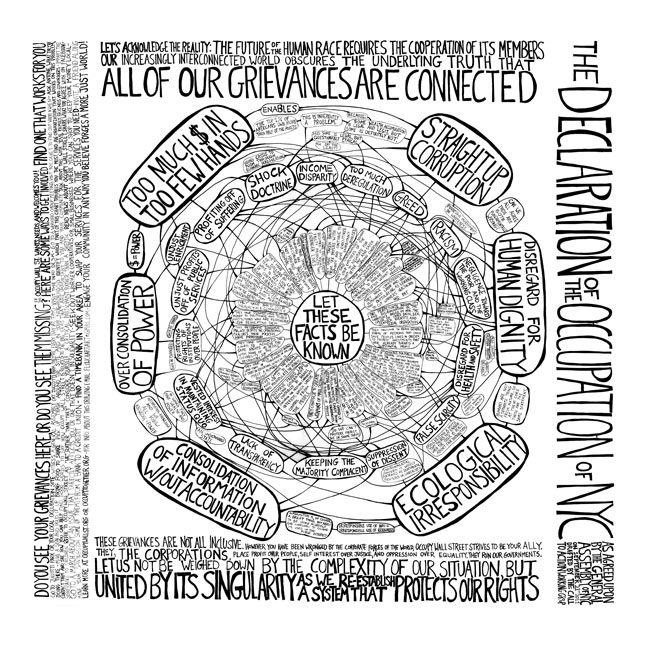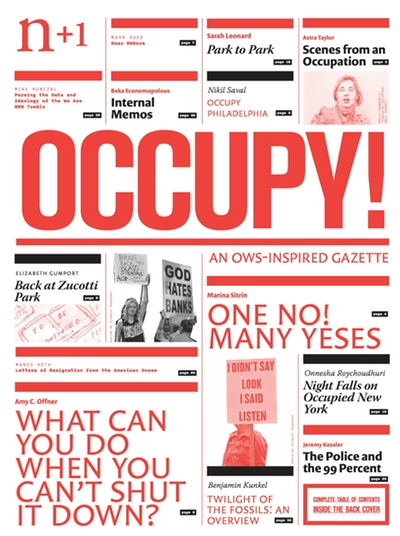On the Global “Occupy” by Alan W. Moore
 Sunday, December 11, 2011 at 10:11AM
Sunday, December 11, 2011 at 10:11AM [Alan Moore's blog, Occupations and Properties] has long been concerned with information and issues around occupation. The movement of squatted social centers has been about providing social, political and cultural space in cities where the processes of hyper-capitalism have foreclosed or constrained such possibilities. These occupations have been for the most part tiny islands in the immense oceans of normative life, captained by ultra-left pirate bands. Only now has a global movement bloomed which demands that same kind of space, which occupies it, and resolutely, slowly, determinedly discusses what to do about the systemic failure of the capitalist system to provide for the social welfare.

Visiting in New York before the Occupy Wall Street (OWS) protests began, I biked by the site in the morning and was amazed at the extraordinary police presence for what I assumed would be a small demonstration. Now I see the cops were right. Like small boys whose defensiveness is in proportion to their guilt, they knew what was up. The encampment developed beautifully, roiled by traditional protest marches which set off chanting slogans – but even these worked in well as the marchers returning were greeted with cries of “Welcome home!” The form of OWS developed like the encampments of the 15 May movement (15M) I'd seen in the Puerta del Sol in Madrid – with designated areas to handle all the various necessities, as in a social center. The massive general assemblies of the 15M ran smoothly. All this I assumed was the outcome of decades of experience with big-building occupations by many activists in 15M.
What precisely the 15M owes to the squatting movement is a question which will be addressed by Miguel Martínez at the early December meeting of the SQEK in Amsterdam. But the question of what the Occupy movement owes to squatters is only one of many as the U.S. movement is historicized. The Smithsonian and New-York Historical Society are already scrambling together collections of OWS artifacts. Are other cities' historical societies doing the same? On my travels I saw Occupy encampments in the downtowns of Chicago and Minneapolis this fall, and some time spent on the web can turn up the online evidence of the dozens more around the USA. These are all significant local events in a movement writers for “Dissent” have compared to the populist risings of the 1930s.
Since my return to Madrid, I've been following the U.S. on the web, just as I did with the Tahrir Square uprising in Egypt. That was easily the most exciting webcast of 2011. The international character of the Occupy movement, like the anti-WTO organizing of the '90s and '00s, follows the dust storms of international capital. While the entire scope of this global revolutionary period is too much to wrap one's head around, a September collection of “journalisms” on the 16 Beaver Group website begins to try, comparing U.S., Greece, and Egypt protests and their processes. The U.S. correspondent writes that, like me, “I have to follow from home via this Twitter feed: https://twitter.com/#!/OccupyWallStNYC.” The Twitter feed is tactical, but it also turns up all sorts of great stuff that's been written about the movement, like the Lowndes and Warren text cited above. S/he also watches the OWS live on http://www.livestream.com/globalrevolution, and recommends the live feed of the assembly process.
As web television, the national OWS so far has been a bit of a bore, or to be fair, widely dispersed in eventless streams and various shorts. There is no CNN for this revolution. Still, I liked the Ed David short film “Where Do We Go from Here?”, posted at http://occupywallst.org/ for the one-month anniversary of the NYC occupation. In it, a young woman explains in rejoinder to the mainstream pundits' complaint that OWS has no program, “I have no idea – and that's what's really exciting, not knowing what's going to happen.”
So far as analysis goes, Marxists are weighing in heavily on this movement. After a visit to Occupy London, “Lenin” (Richard Seymour, in the blog “Lenin's Tomb”) points out the “political indeterminacy of the movement thus far,” but concludes that, given their so-far enunciated principles, that “it's a reformism radicalising in the direction of an anti-systemic stance.” For him, “This isn't a revolutionary situation, but merely a punctuating moment in the temporal flow of class struggle.” The identification with Egypt, which Seymour says has been mocked in the English press, emphasizes the internationalism of the movement, and, like OWS, “it identifies the political class rule of the 1% as the key problem; the colonization of the representative state by big capital.”
 Alan Moore,
Alan Moore,  blog,
blog,  occupations,
occupations,  properties in
properties in  texts
texts 







